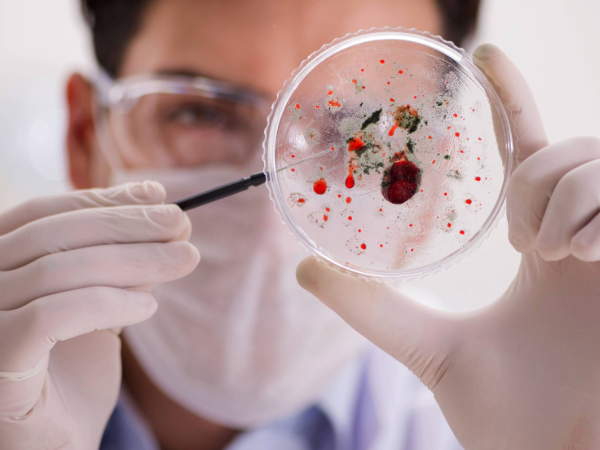 It starts quietly, a bite or a scratch, and by the time symptoms surface, it’s often too late. Rabies isn’t just a distant threat—it’s alive and present here in Alabama.
It starts quietly, a bite or a scratch, and by the time symptoms surface, it’s often too late. Rabies isn’t just a distant threat—it’s alive and present here in Alabama.
Prevention remains critical, but once symptoms appear, treatment options are extremely limited. That’s because rabies hides behind a complex molecular shield that makes it nearly impossible to fight.
“For more than 30 years, my research has focused on the viral proteins that drive replication,” said Todd Green, Ph.D., structural biologist and virologist and associate professor in the UAB Department of Microbiology. “By uncovering how these processes work in rabies and related viruses, we hope to open new doors for therapeutics, ones that can stop viral outbreaks before they become global threats.”
Green unpacks the virus’s complex biology, highlighting how UAB researchers use molecular science to expose its vulnerabilities and explore new paths for treatment.
The challenge of treating rabies
Rabies is notoriously difficult to treat once symptoms begin, and that challenge starts at the molecular level. Unlike many viruses that immediately translate their genetic material into proteins, rabies belongs to a family of viruses with a far more complex replication process.
“The rabies virus and all negative-strand RNA viruses (NSVs) have distinctive replication cycles,” Green explained. “They rely on surface proteins that interact with various cell types and unique enzymes that drive transcription and replication.”
What sets these viruses apart is how tightly their genomes are bound to nucleocapsid (N) proteins. This N protein–RNA complex acts as the template for both transcription and replication.
That means rabies must first transcribe its genetic material into messenger RNA (mRNA) before proteins can be made.
“This could offer an opportunity to target rabies at an earlier stage of replication, different from how we typically treat other viruses,” Green added. “There are only broad-spectrum antivirals, not rabies-specific ones, so there is potential to develop antivirals that directly target these early stages of replication.”
A weak spot in the rabies virus
Decoding rabies' replication process has revealed one of its most significant vulnerabilities: a specialized polymerase enzyme the virus depends on to survive and multiply.
While different viruses use various strategies to replicate, NSVs like rabies rely on this enzyme to generate mRNA and replicate their genomes.
“Two unique features of the polymerase are that it recognizes a protein-RNA complex as the viable template for both transcription and replication, and polymerases of NSVs have a different mechanism for capping viral mRNA,” Green explained. “Capping is necessary for the stability of mRNA and efficient translation of mRNA to protein.”
In NSVs, the polymerase has a special region that carries out this capping through an enzymatic process distinct from the host’s.
This molecular discovery offers a promising target for antiviral drugs that could disrupt the virus without harming human cells.
Decoding the structure
The department has played a pivotal role in advancing research on NSVs. In the late 1980s and early 1990s, former faculty members and current adjunct professors Gail Wertz, Ph.D., and Andrew L. Ball, Ph.D., helped pioneer reverse genetics systems for NSVs. These tools allowed researchers to introduce targeted mutations into viral genomes, revolutionizing the study of viral behavior and replication.
“My work has focused on the structural biology of two related rhabdoviruses: vesicular stomatitis virus (VSV) and rabies virus,” Green stated. “Working alongside Ming Luo, Ph.D., who retired in 2014, I helped determine the structure of the VSV nucleocapsid protein bound to RNA, and later studied its interaction with the phosphoprotein.”
Green’s lab also defined parts of the polymerase (L) structure and model polymerase complexes for VSV and rabies viruses.
“Over decades of research, we’ve mapped the structures and interactions of all major viral proteins,” he said. “This has given us a much deeper understanding of how these viruses assemble, replicate, and transcribe their genomes.”
Building on this foundation, the department continues to expand its impact on viral research and antiviral development.
“By studying the detailed molecular makeup of viruses, researchers in our department can illuminate new paths for targeted antiviral therapies,” added J. Victor Garcia-Martinez, Ph.D., CPC, Charles H. McCauley Endowed Chair in Microbiology. “Their studies on virus replication mechanisms and structural vulnerabilities offer hope for the possible development of future treatments that could transform once-untreatable threats into preventable diseases.”